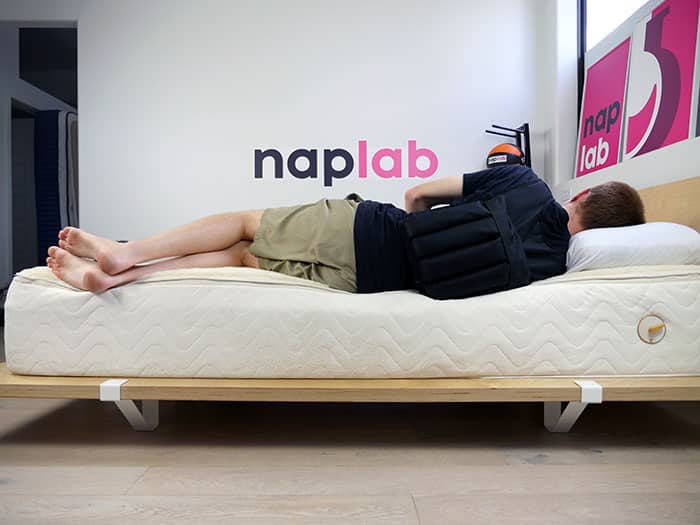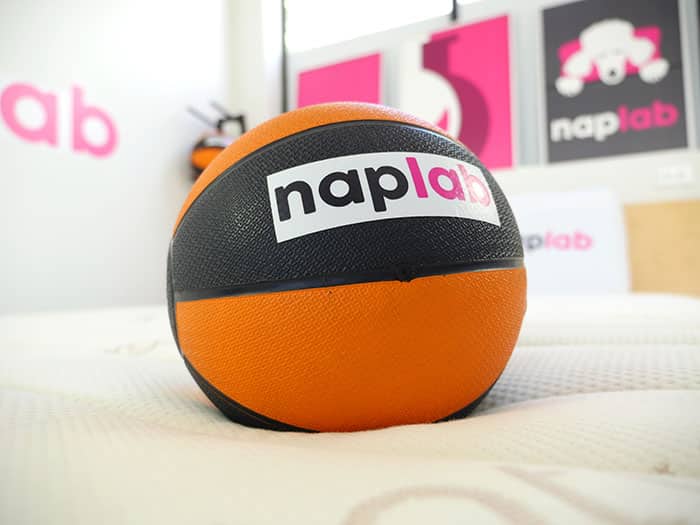Under the sheets of any mattress, there may be some extra layers. But what do they do exactly? Today we’re going to look at two of the most popular pieces you may find under sheets—a mattress pad vs. mattress topper.


Mattress Pad
Pros
- Machine washable
- Sometimes waterproof & provides basic protection
- Can enhance the feel of a mattress you already like
Cons
- Thinner profile (less than 2″)
- Does not drastically change the feel; can only add softness
Mattress Topper
Pros
- More drastically changes the feel of the mattress
- Can add softness or firmness
- Thicker profile height, usually 2-4″ tall
Cons
- More expensive
- Not machine washable
- Does not protect the mattress (ie: waterproof, etc)
Summary
Mattress pad vs. mattress topper— Both mattress pads and toppers are designed to add a level of comfort to the mattress. A mattress pad can add a little softness, but a mattress topper can add softness or firmness, depending on the style you get.
Also, a mattress pad can be waterproof, while also providing a basic level of protection for your mattress. Notably, a mattress pad isn’t a replacement for a mattress protector. In addition, mattress pads are typically machine washable, while a mattress topper usually is not.
Mattress pads are best if you want to add a little extra softness and pressure relief to your mattress and/or if you want to increase the protection for your mattress without having to use a mattress protector (which can often create heat issues on the mattress).
Mattress toppers are best if you need a more significant change in firmness, be that adding more softness or more firmness. A good mattress topper is also the right choice if you are trying to extend the life of your current mattress. The thicker size allows it to have a more noted impact on the feel of your mattress relative to mattress pads.
In This Guide
The Differences | What is a mattress pad? | What is a mattress topper? | Which is Right For Me? | FAQ
Mattress Pad vs. Mattress Topper: What are the differences?
| Factor | Mattress Pad | Mattress Topper |
|---|---|---|
| Thickness | Less than 2″ thick | More than 2″ thick |
| Purpose | Protection + Comfort | Comfort Only |
| Support | No support | Moderate support |
| Firmness | Adds softness | Adds softness or firmness |
| Maintenance | Machine washable | Not machine washable |
| Price | $-$$ | $$-$$$$ |
What is a mattress pad?
A mattress pad is a relatively thin layer of material (usually 2″ thick or less) with a top layer, 4 sides, and elastic corners that fit on the mattress much like a fitted sheet.
The main purpose of a mattress pad is to add softness and comfort to your mattress.

Waterproof mattress pads can help protect your mattress by providing a thin layer of waterproof material, usually in the center of the pad for extra durability.
But note: not all mattress pads are waterproof. If this is an important factor for you, be sure to read the fine print.
Types of Mattress Pads
There are a number of different types of mattress pads. Material, thickness, and design can all play a role in the feel and firmness of a mattress pad.
Here are three of the most popular types of mattress pads.
#1. Quilted Mattress Pads
Quilted mattress pads are very common and typically the most affordable. They offer a soft plushness to your mattress and can improve pressure relief or the level of contour that your mattress provides.

#2. Cooling Mattress Pads
Cooling mattress pads are enhanced with cooling gel, Crypton, infused copper, or some other type of cooling technology.
These different approaches all have a similar end goal—to draw heat away from sleepers as they rest and reduce the overall body temperature.

#3. Natural Mattress Pads
Natural mattress pads use natural materials, like organic cotton, latex, or wool to make up the majority of the mattress pad layers.
This type of mattress pad may also be quilted and depending on the exact material, it may also have cooling properties.
With these benefits, natural mattress pads also typically have a higher price tag as well.
Best Mattress Pads
What is a mattress topper?
A mattress topper is usually thicker than a mattress pad, typically 2″ or more. Unlike a traditional mattress pad, which adds a touch of softness, a mattress topper can alter the feel of a mattress more significantly.

A mattress topper can make a mattress firmer or softer. It is placed on top of the mattress, but below all of the sheets and bedding.
Types of Mattress Toppers
#1. Foam
A foam mattress topper is usually going to be a type of foam.
Memory foam, gel memory foam, poly foam, and natural latex foam are the most common foam toppers.

Gel memory foam toppers use gel-infused memory foam for hug, contour, and great cooling.
Zoned memory foam toppers may have cutouts or convolution portions of the mattress that allow for airflow or a change in pressure relief.

#2. Natural
A mattress topper can be a variety of materials. Some of the most popular types include perforated latex, cotton, or wool.
Natural mattress toppers pair well with natural mattresses for an eco-friendly bed. They can also help to bring natural benefits to more conventional mattresses.
#3. Feather Bed
A feather bed mattress topper is filled with down feathers or down alternative, similar to a traditional duvet, and quilted in large swatches to keep the down in place.

It is extremely plush, yet still breathable. Feather beds can give a firm mattress a very plush, lightweight feel, which may be a welcomed change.
Best Mattress Toppers
Of the types listed above, here are four quick examples of some of the best mattress toppers from each category.
Is a mattress pad or mattress topper right for you?
I would recommend a mattress pad if you want:
- A little softness added to the mattress
- To protect the mattress (opt for a waterproof mattress pad)
- A thinner material—typically 1-2″ thick
I would recommend a mattress topper if you want:
- To drastically change the feel of your mattress (firmer or softer)
- Improved mattress edge support (opt for a firmer mattress topper)
- A thicker material—typically 2-4″ thick
FAQs
A mattress pad is thicker than a mattress protector. A mattress protector is designed to ONLY protect while a mattress pad can protect and enhance comfort as well.
While a memory foam mattress topper can certainly enhance the memory foam feel, if you’re really looking for that deep contour, classic hug, etc, you’ll want the deep pressure relief from a memory foam mattress as well.
A mattress topper is only 2-4″ thick typically and it’s just not enough thickness to create the classic memory foam feel.
No. Most mattress toppers are not waterproof. The design of a topper is to just sit on top of the mattress whereas a mattress pad may be waterproof.
For the best durability, you can combine a mattress topper with a waterproof mattress pad. Then add bedding as usual.








